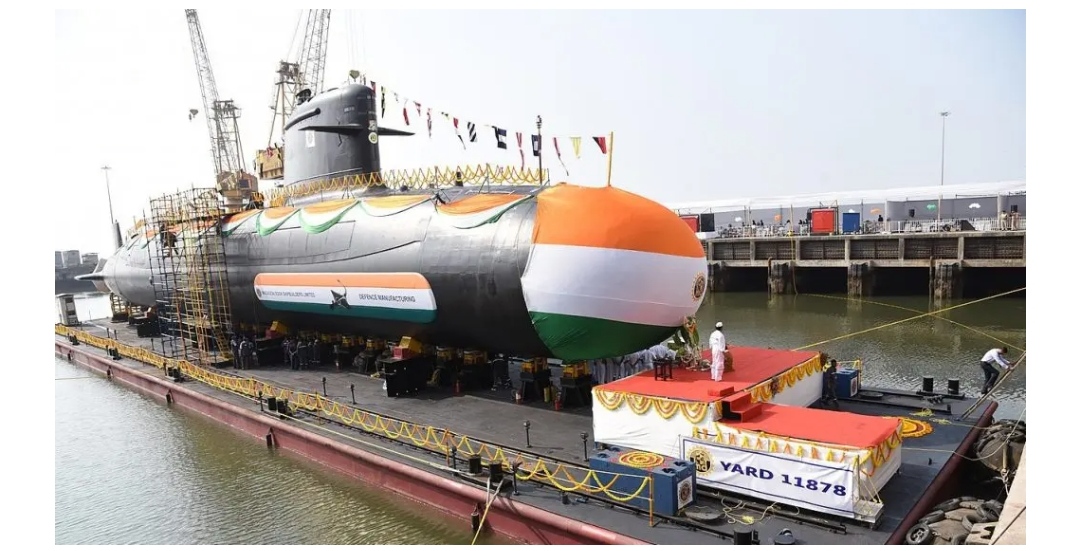India Will Build Nuclear submarines and ICBMs And That Is No Mistake

By
Colonel Awadhesh Kumar, Veteran
Despite the ongoing defence modernization of conventional forces since 2014, India has invested in building may be up to six nuclear powered Submarines capable of launching nuclear armed ballistic missiles. They are the Arihant-class submarine fleet,of which two are already under deployment carrying 1500km range K15 ballistic missiles.
The balance four will also be joining in the foreseeable future and carrying K4 missiles having range of around 5000km. These missiles will then be replaced by those having range of over 8000 km. By the time three more SSBNs joins this fleet of six, the Indian submarines should be armed with full range ICBMs.
Apart from the above planning for SSBNs, India has also kick started the construction of 6 nuclear powered killer hunter submarines or the SSGNs and we should having them by2030. Presently the Indian Navy has just one Akula class SSGN, with probably two more from Russia in the pipeline. By 2040 we should be in possession of a much bigger fleet of SSGNs.
On land, by now we have a deployed clusters of rail, road and silo based ICBMs with over 8000 km range and soon we should be adding the Agni VI ICBM with MIRV capability and nearly 12000km range.
The above have not come cheap and American analysts like Frank O’ Donnell, think that they have cost India around Rs 100,000 crores, an amount not well spent and thus is a big mistake.
No Mr O’ Donnell, this money has been spent deliberately and the projects began when the Iron lady, hated by your Watergate Nixon, was still around in India. She had decided that no Nixon or any such kind, in any country, will ever be in a position to threaten India, as was done in December 1971. Nixon had dispatched a task force led by USS Enterprise to coerce India.
So we persisted and in spite of your MTCR and NSG, today India is fully armed with ICBMs, SLBMs carrying both nuclear and thermonuclear warheads. So be assured that it is not pessimism about strategic balance with China that has driven our nuclear build up. If that was the case then we would have started in 1964 itself and definitely in 1974 after our first nuclear test.
Now we are quite sure that Americans are neither in a position to threaten India and nor will they do so.Though we are not very sure about the Chinese. However if they try and venture out into the Indian ocean, then we are getting ready for them. Unlike South of China sea or is it Nautan Sea, they stand no chance against the Indian Navy backed by several unsinkable aircraft carriers like “INS “ Andaman, Nicobar, Lakshadweep and the Deccan Peninsula.
Yes there was altercation between troops of China and India in summer of 2017, the Doklam crisis, which took place not because any Chinese troops had made incursions into Indian territory but because they were trying to grab Bhutanese land. India then stepped in to defend Bhutan because any attack on them is considered an attack on India, This was pure action by India akin to USA reactions in Taiwan Strait.
This was a new India and unlike other countries, we stood our ground with full confidence in ourselves politically, diplomatically and militarily. It was the turn of the Chinese to blink and withdraw. That it was not one time stand was again displayed later on also during the Maldives crisis, wherein the Chinese Flotilla did not dare to venture out and turned tail from Sunda strait itself.
We are fully aware that any peaceful resolution of Indo Tibetan border is less likely in the foreseeable future. We are ready to cooperate, it will have to be on equal terms.
Therefore when Chinese deliberately brushed aside our Sovereignty issue over Gilgit Baltistan area when entering a deal with Pakistanis over CPEC, we rejected it outright and refused to do any thing with their OBOR projects ……see for yourself, where the much touted initiative stands as on date.
Then while carrying out creation of the Union Territory of Ladhak, there was no hesitation in naming those areas under illegal occupation of the Chinese as Chinese Occupied Ladhak.
Whatever armchair experts may say, China has no conventional edge over India either in Ladhak sector or Arunachal Sector. In Sikkim sector their doubts were fully cleared in 1967 itself and the recent Naku La incident only displayed our confidence.
Earlier India was behind in military infrastructure along the Himalayan borders with Tibet as part of a deliberate military strategy formulated in 1962 but now things have been changing at a very fast pace.
In fact the deployment of BRAHMOS 2 regiments along the Chinese front to give a riposte to any Chinese missile barrage has completely rattled the Chinese. The exercise HIMSAGAR has also given enough indication that 17 Corps has been raised not for defending Tawang but to Capture Chengdu and Lhasa, if ever push comes to shove.
India’s nuclear and conventional position with respect to both China and Pakistan is very robust. In fact we are slowly building up our capability to comfortably fight a two front war, if ever thrust on us. Moreover, our nuclear-armed missiles on Agni V now have sufficient range to credibly cover nearly all of China. We have a second strike capability to erase Pakistan from the map and inflict severe punishment on China also.
Indian missiles are spread throughout the country. They have varied ranges and all are capable of covering Pakistan, Tibet and China.The types include approximately Agni-III missiles, with 5,000 kilometers range, Agni-II missiles with 2,000 kilometers range, short-range Agni-I missiles with 800 to 1000 km range and very short range Prithvi-II missiles stationed closer to the Pakistan border and Prithvi 3 on board some of the naval ships. The Agni 5 with 8000km range is now being deployed to cover China.
Of course IAF has designated nuclear strike squadrons also.
As a result, India will pursue greater nuclear restraint and not ape other countries in this matter. India will define and decide its own version of minimum nuclear warheads and missiles deterrence, against China, its lackey Pakistan and any one else. India will continue investing in new nuclear weapons and missiles research to strengthen accuracy, survivability and thus deterrence.
At the global level India has already offered the abolition of all nuclear weapons. However till the time any country retains any nuclear weapon then India too will continue with the same. Nuclear non proliferation will have to be applied universally and not selectively or regionally.
India is so confident in its conventional posture toward Pakistan that had there been no pinpricks in Kashmir, then probably by now we may have forgotten their existence as a political entity.
Pakistan knows that to wipe out the terrorists bases now we do not need to even enter Pakistan. Balakot was just an indicator of our WILL.
In future, if warranted there may be plenty of stand off strikes against all terrorist training camps and hideouts.
On the Tibetan front after reorganization the Chinese Western Theatre Command covering Siachuan, Tibet, Xinjiang and Changing look and sound impressive.
Though the Indian 3 Corps, 4 Corps, 33 Corps and 14 Corps provide more than parity with 17 Corps in reserve as a strike Corps to take the battle into Tibet.
In fact the majority of Chinese forces located far from the Tibet border cannot be employed simultaneously due to mobility restrictions, posing a striking contrast with the majority forward-deployed Indian forces.
Coming to nuclear weapons and missiles, India will continue its research and development but without getting into an arms race with any one. However what is going to constitute the Indian minimum nuclear deterrence against other nuclear powers will be decided by India only. Also India will not make any unilateral decision to restrict the range of its missiles. We too shall reach the highest range available with other missile powers.
Any future Arms control on nuclear weapons and missiles involving India will not be at regional level. It has to be at global level and based on pure reciprocity by all involved. No one should try and equate India with Pakistan. We do not try and equate China with Vietnam or USA with North Korea or Russia with Ukraine.




